| |||||||||||||||||
| |||||||||||||||||
| |||||||||||||||||
The 1925 New York City mayoral election took place on November 3, 1925, resulting in a victory for Democratic Party candidate Jimmy Walker. [1]
| |||||||||||||||||
| |||||||||||||||||
| |||||||||||||||||
| Elections in New York State |
|---|
 |
The 1925 New York City mayoral election took place on November 3, 1925, resulting in a victory for Democratic Party candidate Jimmy Walker. [1]
The main contenders in the race were the Democratic Party candidate Jimmy Walker (1881-1946), a city assemblyman and State Senator, [2] and the Republican candidate Frank D. Waterman (1869-1938) of the Waterman Pen Company. [3] [4] Walker's reputation as a flamboyant man-about-town made him a hero to many working-class voters; he was often seen at legitimate theaters and illegitimate speakeasies. [5] [6] Walker backed many social and cultural issues that were considered politically important at the time, such as opposition to Prohibition, social welfare legislation, legalization of boxing, repeal of blue laws against Sunday baseball games, and condemning the Ku Klux Klan. [7] Waterman was a vocal critic of the Tammany machine's mismanagement of municipal affairs with the expansion of the subway system as a main issue. Waterman, however, was repeatedly accused of hostility to labor, discriminatory hiring practices, and anti-Semitism. [3]
Walker, the Democratic party leader in the New York State Senate received the support from John McCooey, the leader in Brooklyn, and Walker from Ed Flynn of the Bronx, went on to defeat New York Mayor John Hylan in the Democratic primary. [8]
Walker defeated Waterman after receiving 748,687 votes to Waterman's 346,546 votes. [8]
| 1925 general election | Party | Manhattan | The Bronx | Brooklyn | Queens | Richmond [Staten Is.] | Total | % |
| Jimmy Walker | Democratic | 247,079 | 131,226 | 244,029 | 103,629 | 22,724 | 748,687 | 65.8% |
| 69.4% | 71.8% | 60.9% | 63.0% | 67.3% | ||||
| Frank D. Waterman | Republican | 98,617 | 39,615 | 139,060 | 58,478 | 10,794 | 346,564 | 30.5% |
| 27.7% | 21.7% | 34.7% | 35.6% | 32.0% | ||||
| Norman Thomas | Socialist | 9,482 | 11,133 | 16,809 | 1,943 | 207 | 39,574 | 3.5% |
| Joseph Brandon | Socialist Labor | 388 | 488 | 591 | 155 | 21 | 1,643 | 0.1% |
| Warren Fisher | Progressive | 387 | 262 | 528 | 284 | 37 | 1,498 | 0.1% |
| TOTAL | 355,953 | 182,724 | 401,017 | 164,489 | 33,783 | 1,137,966 | ||
| 1925 Democratic primary | Manhattan | The Bronx | Brooklyn | Queens | Richmond [Staten Is.] | Total | % |
| Jimmy Walker | 102,835 | 45,308 | 65,671 | 28,203 | 6,321 | 248,338 | 62% |
| 79% | 68% | 52% | 47% | 34% | |||
| John Francis Hylan | 27,802 | 21,228 | 60,814 | 32,163 | 12,197 | 154,204 | 38% |
| 21% | 32% | 48% | 53% | 66% | |||
| subtotal (for Walker and Hylan only) | 130,637 | 66,536 | 126,485 | 60,366 | 18,518 | 402,542 | [100%] |
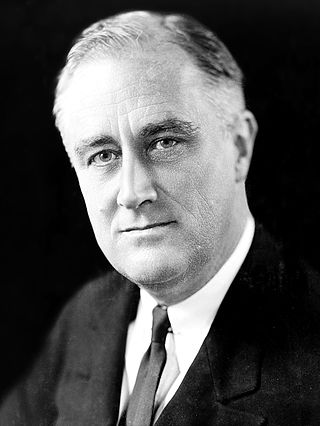
The 1932 United States presidential election was the 37th quadrennial presidential election, held on Tuesday, November 8, 1932. The election took place against the backdrop of the Great Depression. The incumbent Republican President Herbert Hoover was defeated in a landslide by Democrat Franklin D. Roosevelt, the governor of New York and the vice presidential nominee of the 1920 presidential election. Roosevelt was the first Democrat in 80 years to simultaneously win an outright majority of the electoral college and popular vote, a feat last accomplished by Franklin Pierce in 1852, as well as the first Democrat in 56 years to win a majority of the popular vote, which was last done by Samuel J. Tilden in 1876. Roosevelt was the last sitting governor to be elected president until Bill Clinton in 1992. Hoover became the first incumbent president to lose an election to another term since William Howard Taft in 1912, and the last to do so until Gerald Ford lost 44 years later. The election marked the effective end of the Fourth Party System, which had been dominated by Republicans. It was the first time since 1916 that a Democrat was elected president.

The 1948 United States presidential election was the 41st quadrennial presidential election. It was held on Tuesday, November 2, 1948. In one of the greatest election upsets in American history, incumbent Democratic President Harry S. Truman defeated heavily favored Republican New York Governor Thomas E. Dewey, and third-party candidates, becoming the third president to succeed to the presidency upon his predecessor's death and be elected to a full term.
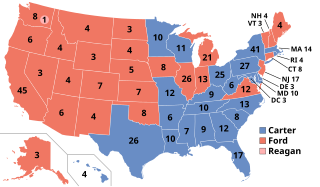
The 1976 United States presidential election was the 48th quadrennial presidential election, held on Tuesday, November 2, 1976. Democrat Jimmy Carter, former Governor of Georgia, defeated incumbent Republican president Gerald Ford in a narrow victory. This was the first presidential election since 1932 in which the incumbent was defeated, as well as the only Democratic victory of the six presidential elections between 1968 and 1988.

James John Walker, known colloquially as Beau James, was mayor of New York City from 1926 to 1932. A flamboyant politician, he was a liberal Democrat and part of the powerful Tammany Hall machine. He was forced to resign during a corruption scandal.

Tammany Hall, also known as the Society of St. Tammany, the Sons of St. Tammany, or the Columbian Order, was an American political organization founded in 1786 and incorporated on May 12, 1789, as the Tammany Society. It became the main local political machine of the Democratic Party and played a major role in controlling New York City and New York State politics. It helped immigrants, most notably the Irish, rise in American politics from the 1850s into the 1960s. Tammany usually controlled Democratic nominations and political patronage in Manhattan for over 100 years following the mayoral victory of Fernando Wood in 1854, and used its patronage resources to build a loyal, well-rewarded core of district and precinct leaders; after 1850, the vast majority were Irish Catholics due to mass immigration from Ireland during and after the Irish Famine of the late 1840s.
The Liberal Party of New York is a political party in New York. Its platform supports a standard set of socially liberal policies, including abortion rights, increased spending on education, and universal health care.
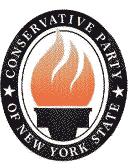
The Conservative Party of New York State is an American political party founded in 1962 following conservative dissatisfaction with the Republican Party in New York. Running on the Conservative Party line, James L. Buckley won election to the U.S. Senate in 1970 and served for one term. Since 2010, the party has held "Row C" on New York ballots—the third-place ballot position, directly below the Democratic and Republican parties—because it received the third-highest number of votes of any political party in the 2010, 2014 and 2018 New York gubernatorial elections. The party is known for its strategy of attempting to influence the Republican Party in a more conservative direction.

The 2005 New York City mayoral election occurred on Tuesday, November 8, 2005, with incumbent Republican mayor Michael Bloomberg soundly defeating former Bronx borough president Fernando Ferrer, the Democratic nominee. Several third-party candidates also ran for mayor. Bloomberg won four of the five boroughs, the exception being the Bronx.

The mayor of New York City is elected in early November every four years, in the year immediately following a United States presidential election year, and takes office at the beginning of the following year. The city, which elects the mayor as its chief executive, consists of the five boroughs, which consolidated to form "Greater" New York on January 1, 1898.

Leo Leous Isacson was a New York attorney and politician. He won the 1948 election to the United States House of Representatives from New York's twenty-fourth district (Bronx) as the candidate of the American Labor Party in what at that time The New York Times called "a test of Truman-[versus]-Wallace strength" with regard to the upcoming U.S. presidential elections and a "test today of the third-party movement headed by Henry A. Wallace".
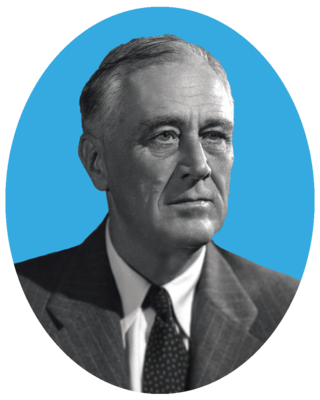
The 1944 Democratic National Convention was held at the Chicago Stadium in Chicago, Illinois from July 19 to July 21, 1944. The convention resulted in the nomination of President Franklin D. Roosevelt for an unprecedented fourth term. Senator Harry S. Truman of Missouri was nominated for vice president. Including Roosevelt's nomination for the vice-presidency in 1920, it was the fifth time Roosevelt had been nominated on a national ticket. The keynote address was given by Governor Robert S. Kerr of Oklahoma, in which he "gave tribute to Roosevelt's war leadership and New Deal policies."
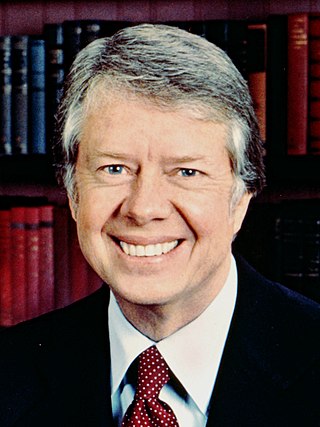
From January 27 to June 8, 1976, voters of the Democratic Party chose its nominee for president in the 1976 United States presidential election. Former Georgia governor Jimmy Carter was selected as the nominee through a series of primary elections and caucuses culminating in the 1976 Democratic National Convention held from July 12 to July 15, 1976, in New York City.

The 1917 New York City mayoral election replaced sitting mayor John P. Mitchel, a reform Democrat running on the Fusion Party ticket, with John F. Hylan, the regular Democrat supported by Tammany Hall and William Randolph Hearst.

The Democratic Party's 1944 nomination for Vice President of the United States was determined at the 1944 Democratic National Convention, on July 21, 1944. U.S. Senator Harry S. Truman from Missouri was nominated to be President Franklin D. Roosevelt's running-mate in his bid to be re-elected for a fourth term.

The 2012 New York state elections took place on November 6, 2012. These elections included the 2012 presidential election, an election to one U.S. Senate seat, and elections to all 27 New York congressional seats, all 63 seats in the New York State Senate, and all 150 seats in the New York State Assembly.

The 1929 New York City mayoral election was held on November 5 in concert with other municipal elections. Democratic incumbent Jimmy Walker defeated Republican challenger Fiorello H. La Guardia in what was considered "a Crushing Defeat to [the] City G.O.P. [delivered]" by Tammany Hall. Socialist candidate Norman Thomas also ran, as did Socialist Labor candidate Olive M. Johnson and former Police Commissioner Richard Edward Enright for the Square Deal Party.

The 1932 New York City special mayoral election was held on November 8. It was triggered by the resignation of incumbent Democratic Mayor Jimmy Walker on September 1, after his administration had become embroiled in scandal. Democratic nominee John P. O'Brien easily defeated Republican Lewis H. Pounds and Socialist Morris Hillquit. Acting Mayor Joseph V. McKee also featured as a write-in candidate. Minor candidates included Communist William L. Patterson and Socialist Labor candidate Olive Johnson.

The New York City mayoral election of 1933 took place on November 7, 1933 in New York City. Incumbent Democratic Mayor John P. O'Brien, who was elected in a special election after the resignation of Mayor Jimmy Walker, faced Republican Congressman and 1929 mayoral candidate Fiorello La Guardia, and former acting mayor and President of the New York City Board of Aldermen Joseph V. McKee, who became acting mayor after Walker's resignation until the special election, and ran on the Recovery Party line.